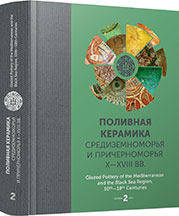Circulation des potiers ou des modèles ? Production damascène de vaisselle ottomane « à la manière » d’Iznik
Circulation of Potters or Models? Damascus Pottery Production in the Style of Iznik Ware
Author(s): Véronique François
Subject(s): History, Archaeology, Comparative history, Modern Age, 16th Century, 17th Century
Published by: Издательский дом Stratum, Университет «Высшая антропологическая школа»
Keywords: Iznik Ware; Damascus Ware; Iznik derivatives; workshops; Bilâd al-Châm; craft
Summary/Abstract: Archaeological excavations conducted by German and French teams in the citadels of Damascus and Aleppo in the early 2000s, occasional discoveries in the Middle East, Istanbul and Cyprus as well as the publication of ancient excavations highlighted a specific group of painted tableware made in a siliceous fabric. This Ottoman pottery has obvious stylistic similarities with the famous pieces manufactured in the Iznik workshops in the 16th and 17th centuries. This article is dedicated to the so-called Syrian Polychrome Ware probably manufactured in Damascus on a date that is difficult to specify. We will show how this Syrian Ottoman production was similar to the Iznik wares and how it differed. We will try to define the date of manufacture — probably in the late 16th and 17th centuries — and identify the potters. Were they itinerant craftsmen who knew how to make Iznik pottery and, changing their place of residence, were making similar bowls from different raw materials? Were they potters from Damascus, the descendants of the Mamluk craftsmen? In that case, did they have at their disposal the original? The status of these objects is also raised. They were not slavish imitations but Iznik derivatives — the copy was partial, incomplete and of uneven quality. The objective of the potters was not to copy to mislead the consumers but rather to take inspiration from the models to please. The study of archaeological finds and pottery preserved in European museums allows dealing with these issues.
Book: Поливная керамика Средиземноморья и Причерноморья X—XVIII вв.
- Page Range: 217-243
- Page Count: 27
- Publication Year: 2017
- Language: French
- Content File-PDF

